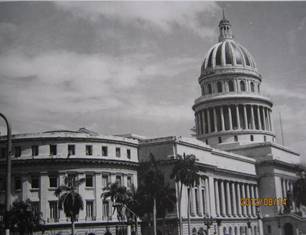
As in all human endeavor, there were correct and incorrect decisions made during Cuba’s republican era. I believe the former were greater than the latter, which leads me to reject labels such as neo-colonialism, puppet regime, pseudo-republic and others used by the regime (and repeated mechanically by others) for purely political and ideological purposes.
Over the course of only fifty years a republic was organized and institutionalized. It advanced at an accelerated pace in agricultural, livestock and industrial production. Services of every kind were established, including in health and education, and our towns and cities were transformed into clean, orderly and civilized human population centers. The benefits of a nation in development are real, even though these did not extend to all citizens. Major indices were starting off at a very low level at the end of the colonial period. Within a short period of time, however, sufficient advances were made to assure that the basic needs of a majority of Cubans were being met.
By the end of the Republic, in contrast to what is repeatedly stated in official propaganda, Cuba was exporting more than it was importing. For example, 62.6% of the sugar industry’s daily capacity was in Cuban hands. It was fourth in the world in the number of cattle per capita, slaughtering 930,000 heads of cattle annually.
Per capita income was the third highest in Latin America, ranking 22nd among 120 countries. National debt was 788 million dollars. Between 82% and 85% of the nation’s wealth was in Cuban hands. Cuban banks held 61.1% of private deposits. There was one automobile for every 40 inhabitants, one radio for every 6.5 inhabitants and one television for every 25 inhabitants.
The industrial sector produced more than 10,000 different items—one for each 1,000 inhabitants. The rate of illiteracy was between 18% and 23%, the second lowest in Latin America. Infant mortality was the lowest in this region. The levels of health and education were among the best in Latin America and, at 2,870 calories, it ranked second in the region, behind Uruguay, in daily calorie consumption. It ranked 29th among the world’s best economies.
The new authorities who came to power largely lacked the training and experience necessary to govern a country. Rather than keeping what had been successful and using it as a basis on which to develop their political, economic and social ideas, they decided to seize everything, transform it and subject it to their sole administrative control.
The consequence was the deterioration and destruction of the entire national infrastructure, a negative phenomenon that continues to this day. Fifty years of failed experiments, and not the embargo, are the primary cause of our prolonged and deep political, economic and social crisis.
Since this premise is not accepted by those who are largely responsible for this national catastrophe, it is difficult to believe in their now outdated commitment to resolve anything with new solutions. These do not address the real problems. Instead, we are expected to believe they will produce change even while the principal dogmatic criteria are being kept in place.
Without a real economic, political and social opening, without a serious dialog between the nation’s various constituencies, it will be impossible to get out of this crisis. It will only be possible to maintain the precarious existence of the “model” until it disappears—something that will happen sooner rather than later in spite of everything being done to prevent it.
It will then be in the hands of a new generation. There will be the responsibility and the arduous task of constructing a republic with everyone and for the good of everyone, as José Martí wanted, without exclusions of any sort—one that is tolerant, democratic and participative, one where Cubans can re-engage with each other after more than a half century of hate and futile resentments.
August 15 2012
